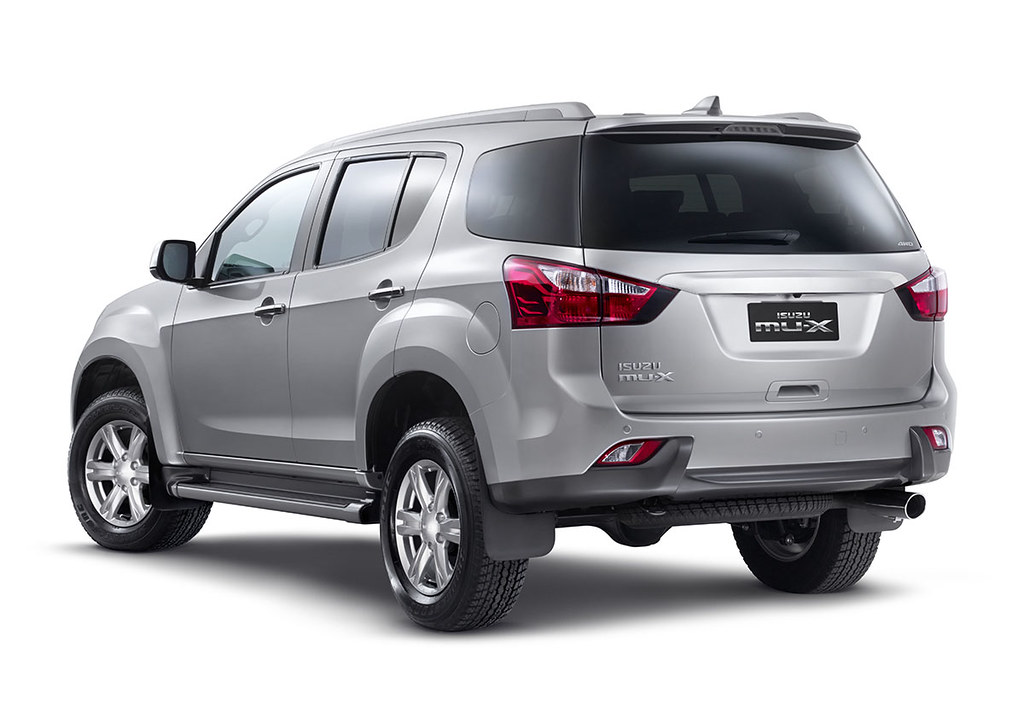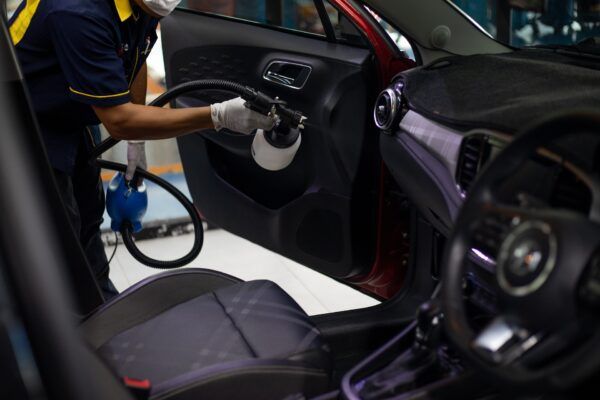
The automotive world is a relentless, ever-churning beast. New models arrive with fanfare, promising the future of driving, while others quietly, and sometimes abruptly, vanish from the showrooms. It’s a cycle of innovation and evolution, a constant refinement of metal, rubber, and silicon. Yet, for us, the enthusiasts, the drivers who form deep connections with our machines, this cycle often brings a pang of sadness. Because sometimes, just sometimes, the axe falls on a true legend, a car that truly shouldn’t have been taken from us so soon.
These aren’t just vehicles; they’re characters, each with a unique personality and a story to tell. They captured hearts, pushed boundaries, and became more than just a means of transport. Then, in what felt like a flash, they were gone. Perhaps it was a shift in market trends, a boardroom decision, a regulatory hurdle too high to clear, or simply a case of being ahead of their time or misunderstood by the wider public. Whatever the reason, their departure left a void, a lingering question of ‘what if?’ and a collective sigh from those who truly understood their brilliance.
So, prepare yourself for a journey back in time, not just to reminisce, but to truly understand. We’re going to peel back the layers on some of the most beloved cars that vanished unexpectedly from production. We’ll celebrate their engineering marvels, their undeniable character, and the sheer joy they brought to countless drivers. And, crucially, we’ll delve into the often-complex reasons why these automotive heroes were prematurely retired, leaving us to mourn their passing and cherish the memories they created. Get ready for a deep dive into the cars we miss the most.
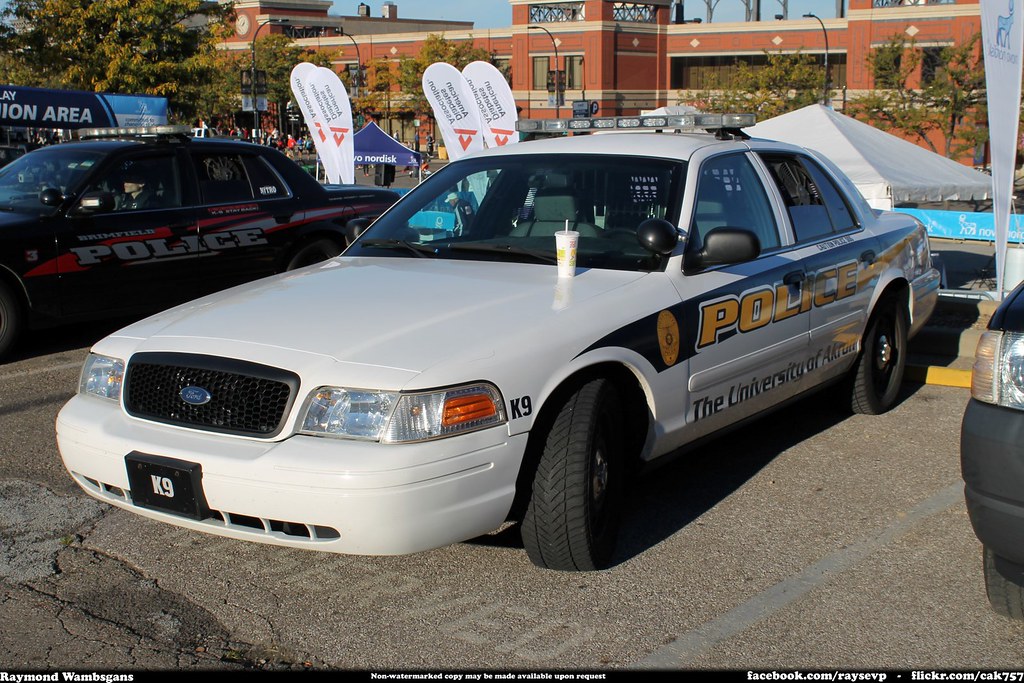
1. **Ford Crown Victoria**
Before the rise of the SUV and the digital dashboard, there was a king on American roads, a true workhorse that embodied robustness and reliability: the Ford Crown Victoria. Produced from 1992 to 2011, this car wasn’t just a sedan; it was an institution. Beloved for its unwavering durability and the effortless grunt of its V8 power, the Crown Vic became an undeniable staple for police fleets and taxi services across the nation. It was the car you saw patrolling the streets, ferrying passengers, and generally getting the job done, day in and day out, without complaint.
What truly endeared the Crown Vic to so many was its no-nonsense, honest approach to motoring. This was a car built for purpose, for racking up hundreds of thousands of miles with minimal fuss. Its body-on-frame construction, a rarity even then, provided a level of toughness that modern unibody cars could only dream of, making it a favorite for those who needed a vehicle that could literally take a beating and keep on going. The V8 engine, while not a fire-breathing supercar unit, delivered smooth, accessible torque, making it a relaxed cruiser yet capable of a surprising turn of pace when duty called.
The decision to stop production was, like many on this list, a casualty of evolving tastes. Ford ultimately decided to cease manufacturing due to the seismic shift in market preference, as consumers flocked towards SUVs and more modern, front-wheel-drive sedans. It’s a testament to its enduring quality that even after its official discontinuation, the Crown Victoria continued its public service life for years, proving that sometimes, being unfashionable just means being built to last. The last models, incidentally, sold for around $30,000, a small price for such a monumental piece of automotive history.
Car Model Information: 2021 Lincoln Navigator Reserve
Name: Ford Crown Victoria
Caption: 1998–2002 Ford Crown Victoria LX
Manufacturer: Ford Motor Company
Production: January 1991 – September 15, 2011
ModelYears: 1992–2012
Assembly: Talbotville, Southwold, Ontario
Class: Full-size car
BodyStyle: Sedan (automobile)
Platform: Ford Panther platform
Layout: Front-engine, rear-wheel drive layout,body-on-frame
Predecessor: Ford LTD Crown Victoria
Categories: 2000s cars, 2010s cars, All Wikipedia articles in need of updating, All articles needing additional references, All articles with dead external links
Summary: The Ford Crown Victoria (“Crown Vic”) is a full-size sedan that was marketed and manufactured by Ford. The successor to the Ford LTD Crown Victoria, two generations of the model line were produced from the 1992 until the 2012 model years. The Ford counterpart of the Mercury Grand Marquis, the Crown Victoria was the largest sedan marketed by Ford in North America, slotted above the Ford Taurus. The Crown Victoria Police Interceptor (1992–2011) was marketed specifically for law-enforcement use; a long-wheelbase Crown Victoria sedan (2002–2011) was marketed primarily for taxi cab fleets.
The Crown Victoria was produced on the rear-wheel drive, body-on-frame Ford Panther platform, sharing its chassis with the Grand Marquis and Lincoln Town Car. From 1997 until their 2011 discontinuation, the three model lines were the sole four-door sedans produced in North America with a full-length frame, rear-wheel drive, and a standard V8 engine. While the front and rear crumple zones were engineered into the vehicle, it was one of Ford’s products that were not of unibody construction for the entire generation. The Crown Victoria was the last car made using the Ford Panther platform.
For its entire production, the Crown Victoria was produced by Ford Canada alongside the Grand Marquis at St. Thomas Assembly in Southwold, Ontario. From 1991 until 2011, over 1.5 million cars (including Police Interceptors) were produced by St. Thomas Assembly prior to its closure. A 2012 Crown Victoria (intended for Middle East export) was the final vehicle produced by the facility. Following the discontinuation of the model line, the Crown Victoria was not directly replaced, with the full-size Ford Taurus serving as the next basis for Ford police cars.
Get more information about: Ford Crown Victoria
Buying a high-performing used car >>>
Brand: Ford Model: Crown Victoria
Price: $37,054 Mileage: 78,317 mi.
Read more about: Empowering Families: 10 SUVs Equipped with Life-Saving Safety Technology to Halve Accident Risks
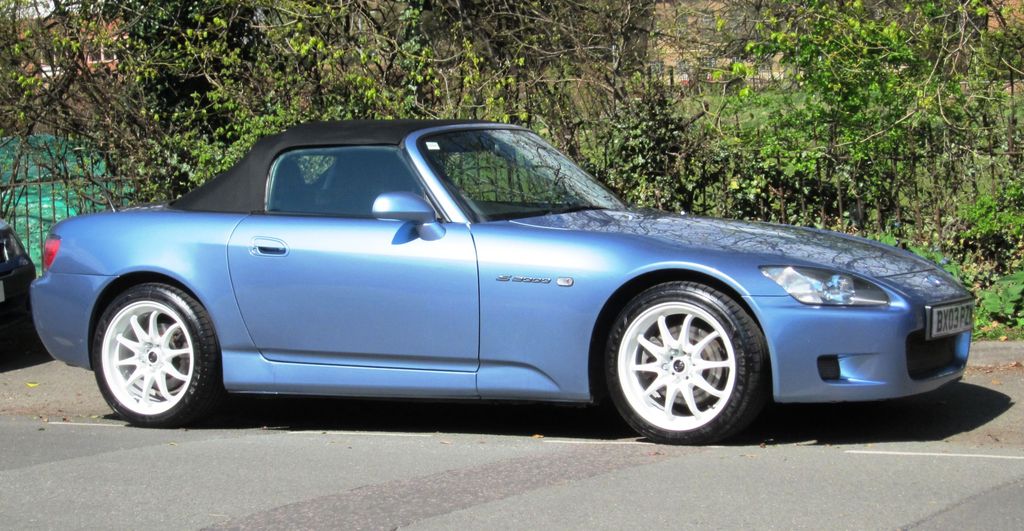
2. **Honda S2000**
If ever there was a car built purely for the joy of driving, it was the Honda S2000. Produced between 1999 and 2009, this rev-happy roadster wasn’t just a car; it was an experience. It charmed drivers with a combination that seemed almost impossible to achieve: perfect balance, surgical handling, and an engine that loved to sing all the way to an astonishing 9,000 RPM redline. This was Honda engineering at its absolute peak, demonstrating a commitment to lightweight, high-performance, and driver engagement that few manufacturers dared to match.
The heart of the S2000’s appeal was undoubtedly its F20C (and later F22C1) engine. This naturally aspirated four-cylinder was a masterpiece of internal combustion, delivering power in a linear, exhilarating surge that demanded to be explored. Hitting that 9,000 RPM redline wasn’t just a number; it was a symphony of mechanical perfection, a high-pitched wail that defined the car’s character. Coupled with a slick, short-throw six-speed manual gearbox and a chassis that communicated every nuance of the road, the S2000 was a pure, unadulterated enthusiast’s car, devoid of unnecessary electronic nannies.
Despite its loyal fan base and critical acclaim, the S2000 faced the harsh realities of the market. Declining sales, as consumers gravitated towards more practical or less extreme sports cars, ultimately sealed its fate. Add to that the tightening emissions regulations, which posed a significant challenge for such a high-revving, performance-oriented engine, and Honda made the tough decision to discontinue it. Pricing started at around $34,000 in its final production years, a bargain for a car that offered such an unfiltered, exhilarating driving experience, now a highly sought-after modern classic.
Car Model Information: 2003 Honda S2000
Name: Honda S2000
Manufacturer: Honda
Production: 1999–2009 (110,673 produced)
Class: Sports car
Layout: Front-engine, rear-wheel-drive layout#Front mid-engine, rear-wheel-drive layout
BodyStyle: Roadster (automobile)
Designer: Shigeru Uehara
Caption: 2005 Honda S2000 (AP2)
Predecessor: Honda S800
Categories: 2000s cars, All articles lacking reliable references, Articles lacking reliable references from May 2024, Articles with short description, CS1: unfit URL
Summary: The Honda S2000 is a front-mid engine open top sports car that was manufactured by Japanese automobile manufacturer Honda, from 1999 until 2009. First shown as a concept car called the SSM at the Tokyo Motor Show in 1995, the production version was launched on April 15, 1999, to celebrate the company’s 50th anniversary. The S2000 is named for its engine displacement of two liters, while “S” stood for “sports” carrying on in the tradition of the S500, S600, and S800 roadsters of the 1960s.
Several revisions were made throughout the car’s production life, including changes to the engine, gearbox, suspension, interior and exterior. Officially two variants exist: the initial launch model was given the chassis code AP1; though cosmetically similar, the facelifted version, known as the AP2 in North America and Japan, incorporated significant changes to the drivetrain and suspension. Production of the S2000 ceased on August 19, 2009.
The Honda S2000 was notable for its exceptional specific power output of about 92 kW (124 hp) per liter, or about two horsepower per cubic inch, the highest of any mass production, naturally aspirated car, until 2010.
Get more information about: Honda S2000
Buying a high-performing used car >>>
Brand: Honda Model: S2000
Price: $27,995 Mileage: 78,457 mi.
Read more about: Gear Up for the Future: 11 Legendary Classic Cars Powering Back to Life in 2026
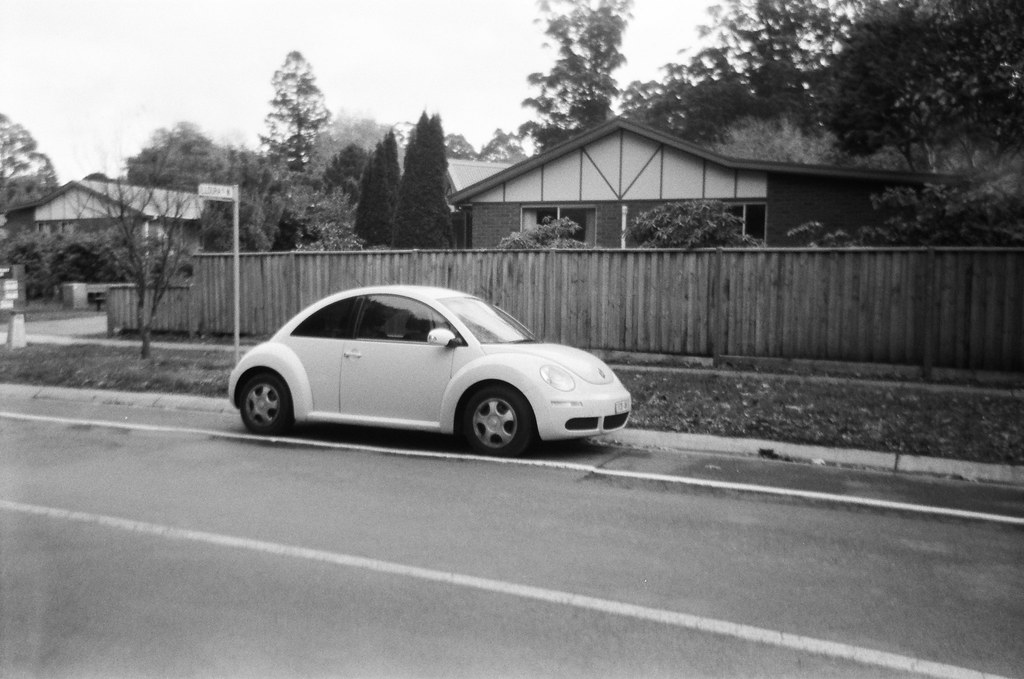
3. **Volkswagen Beetle**
Some cars are merely transportation; others become cultural phenomena. The Volkswagen Beetle, in its various iterations from 1938 to 2019, firmly belongs to the latter. It wasn’t just a vehicle; it was an icon, a symbol, and a beloved companion to generations across the globe. Its distinctive, friendly design and undeniable cultural impact cemented its place in automotive history, making it instantly recognizable and universally adored. From its humble origins to its modern reinterpretations, the Beetle’s silhouette was – and remains – unmistakable.
What truly made the Beetle special was its endearing personality. It was approachable, unpretentious, and utterly unique in a world of ever-evolving automotive designs. It transcended social classes, becoming a car for everyone, from college students to grandmothers. Its simple, air-cooled engineering meant it was often easy to maintain, fostering a community of passionate owners who loved to tinker and personalize their ‘bugs.’ It brought a smile to your face, both as an owner and as an onlooker, a rare feat in the often-serious world of automobiles.
However, even legends must eventually give way to progress. With changing market dynamics and the overwhelming need for more modern designs, Volkswagen ultimately ceased its production. The final generation, which offered a contemporary twist on the classic design, still couldn’t escape the shift in consumer preferences towards SUVs and more conventional sedans. The last models were priced around $20,000, marking the end of an era for a car that, more than any other, proved that charisma and character can be just as important as horsepower or luxury. Its departure left a void in the automotive landscape that no other car can truly fill.
Car Model Information: 2012 Volkswagen Beetle 2.5L
Sp: uk
Name: Volkswagen Type 1,”Beetle”
Caption: 1965–1966 Volkswagen Käfer
Manufacturer: Volkswagen
Alt: A front-three quarters view of a pale-yellow Volkswagen Käfer. It features 165/80R15 tires, which shod 15×4. 5″ silver, circular wheels. The Käfer features a beetle-like body, and its window is open. The picture is taken with much greenery in the background, and the photo was edited to give it a more warmer tone.
Aka: List of names for the Volkswagen Type 1
Assembly: #Markets and assembly
Designer: Ferdinand Porsche
Class: Small family car
BodyStyle: Sedan (automobile),convertible
Production: 1938–2003,21,529,464 produced
Successor: Volkswagen Golf Mk1,Volkswagen Gol#First generation (Typ30, 1980),Volkswagen New Beetle
Layout: Rear-engine, rear-wheel-drive layout
Engine: Petrol,Volkswagen air-cooled engine,1192 cc H4,1285 cc H4,1493 cc H4,1584 cc H4
Transmission: manual transmission,Saxomat,Autostick
Wheelbase: convert
Length: convert
Width: convert
Height: 1500 mm
Abbr: on
Weight: convert
Categories: 1940s cars, 1950s cars, 1960s cars, 1970s cars, 1980s cars
Summary: The Volkswagen Beetle, officially the Volkswagen Type 1, is a small family car produced by the German company Volkswagen from 1938 to 2003. A global cultural icon known for its bug-like design, the Beetle is widely regarded as one of the most influential cars of the 20th century. Its production period of 65 years is the longest for any single generation of automobile, and its total production of 21.5 million units makes it the most produced car of a single platform in history and the second-highest of all nameplates manufactured in the 20th century.
The Beetle was conceived in the early 1930s. The leader of Nazi Germany, Adolf Hitler, decided there was a need for a people’s car—an inexpensive, simple, mass-produced car—to serve Germany’s new road network, the Reichsautobahn. The German engineer Ferdinand Porsche and his design team began developing and designing the car in the early 1930s, but the fundamental design concept can be attributed to Béla Barényi in 1925, predating Porsche’s claims by almost ten years. The result was the Volkswagen Type 1 and the introduction of the Volkswagen brand. Volkswagen initially slated production for the late 1930s, but the outbreak of war in 1939 meant that production was delayed until the war had ended. The car was originally called the Volkswagen Type 1 and marketed simply as the Volkswagen. It was not until 1968 that it was officially named the “Beetle”.
Volkswagen implemented designations for the Beetle in the 1960s, including 1200, 1300, 1500, 1600, 1302, and 1303. Volkswagen introduced a series of large luxury models throughout the 1960s and 1970s—comprising the Type 3, Type 4 and K70—to supplement the Beetle, but none of these models achieved the level of success that it did. In 1972, it became the best-selling car of all time, a position it retained for nearly three decades. Rapidly changing consumer preferences toward front-wheel drive compact hatchbacks in Europe prompted Volkswagen’s gradual shift away from rear-wheel drive, starting with the Golf in 1974. In the late 1970s and ’80s, Japanese automakers dominated some markets around the world, which contributed to the Beetle’s declining popularity.
The Beetle remains one of the best-selling cars of all time and is the first to sell over 20 million units. Over its lifespan, its design remained consistent, yet Volkswagen implemented over 78,000 incremental updates. These modifications were often subtle, involving minor alterations to its exterior, interior, colours, and lighting. Some more noteworthy changes included the introduction of new engines, models and systems, such as improved technology or comfort. The Beetle maintains a substantial cultural influence and is regarded as one of the most iconic vehicles in automotive history; its success largely influenced the way automobiles are designed and marketed, and propelled Volkswagen’s introduction of a Golf-based series of vehicles.
Get more information about: Volkswagen Beetle
Buying a high-performing used car >>>
Brand: Volkswagen Model: Beetle
Price: $13,985 Mileage: 27,389 mi.
Read more about: What Happened to Them? A Deep Dive into 14 Iconic European and American Cars That Disappeared from Production
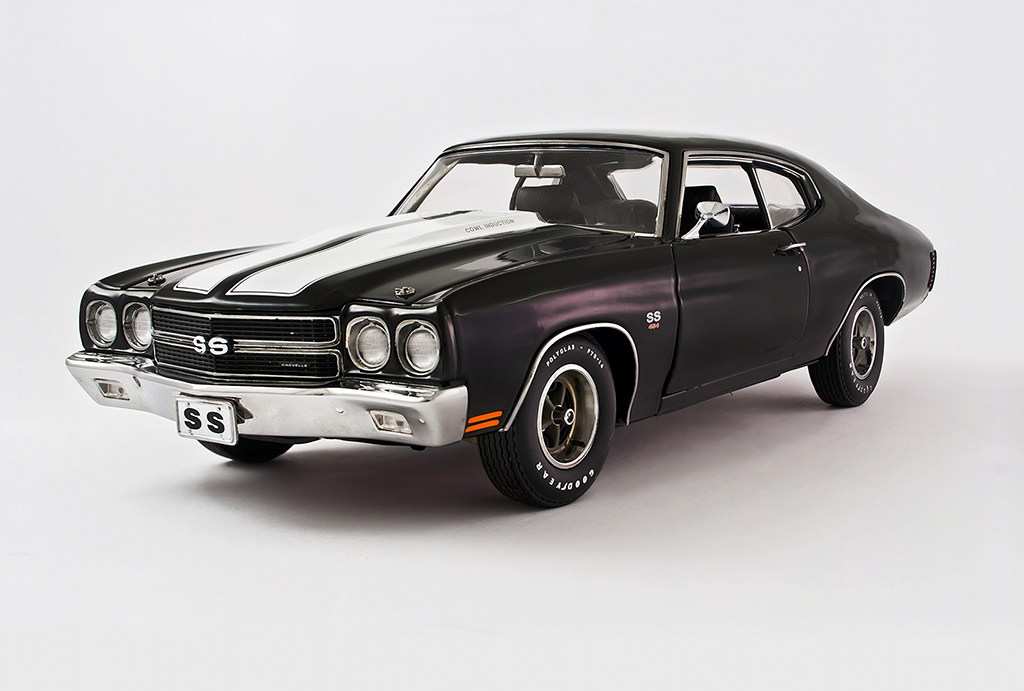
4. **Chevrolet SS**
In a world increasingly dominated by front-wheel-drive crossovers and sanitized driving experiences, the Chevrolet SS was a glorious, fire-breathing anomaly. Available from 2013 to 2017, this car was a veritable hidden gem, a proper, old-school muscle sedan that barely registered on the radar of most buyers. It boasted a muscular V8 engine paired with a classic rear-wheel-drive setup, delivering a performance package that was both exhilarating and surprisingly practical. It was a wolf in sheep’s clothing, ready to chew up asphalt while comfortably carrying the family.
This was a car for those in the know, a connoisseur’s choice that offered a sublime blend of power and everyday usability. The SS wasn’t flashy or ostentatious; its understated styling belied the serious performance lurking beneath the hood. It offered the raw, unadulterated thrills of a performance car – a fantastic soundtrack, superb handling, and the ability to put a smile on your face with a stab of the throttle – all wrapped in a sedan body that could easily blend into traffic. For enthusiasts, it represented a dying breed of honest, powerful, rear-wheel-drive sedans.
Its discontinuation, however, was a classic tale of brilliance overlooked. Despite its outstanding capabilities, the Chevrolet SS suffered from low sales. It simply failed to capture a significant market share, overshadowed by more aggressively marketed, and perhaps less uncompromising, alternatives. This led to its unfortunate retirement, leaving a passionate but small group of owners to cherish their unique machines. It had a starting price of around $47,000, a relative bargain for the performance and character it offered, a poignant reminder that sometimes, the best cars are the ones the masses never quite understood.
Car Model Information: 2025 Chevrolet Blazer EV eAWD SS
Name: Chevrolet Impala
Caption: Fourth generation model (1967)
Manufacturer: Chevrolet
Production: 1957–1985,1994–1996,1999–2020
ModelYears: 1958–1985,1994–1996,2000–2020
Predecessor: Chevrolet Bel Air,Chevrolet Lumina#Second generation (1995–2001)
Successor: Chevrolet SS,Chevrolet Caprice
Platform: GM B platform,GM W platform,GM W platform (GMX211) (2005–2013),GM Epsilon platform#Epsilon II
Class: Full-size car,Mid-size car
Layout: Front-engine, rear-wheel-drive layout,Front-engine, front-wheel-drive layout
Categories: 1960s cars, 1970s cars, 1980s cars, 1990s cars, 2000s cars
Summary: The Chevrolet Impala () is a full-size car that was built by Chevrolet for model years 1958 to 1985, 1994 to 1996, and 2000 to 2020. The Impala was Chevrolet’s popular flagship passenger car and was among the better-selling American-made automobiles in the United States.
For its debut in 1958, the Impala was distinguished from other models by its symmetrical triple taillights. The Chevrolet Caprice was introduced as a top-line Impala Sport Sedan for model year 1965, later becoming a separate series positioned above the Impala in 1966, which, in turn, remained above the Chevrolet Bel Air and the Chevrolet Biscayne. The Impala continued as Chevrolet’s most popular full-sized model through the mid-1980s. Between 1994 and 1996, the Impala was revised as a 5.7-liter V8–powered version of the Chevrolet Caprice Classic sedan.
In 2000, the Impala was reintroduced again as a mainstream front-wheel drive car. In February 2014, the 2014 Impala ranked No. 1 among Affordable Large Cars in U.S. News & World Report’s rankings. When the 10th generation of the Impala was introduced for the 2014 model year, the 9th generation was rebadged as the Impala Limited and sold only to fleet customers through 2016. During that time, both versions were sold in the United States and Canada. The 10th-generation Impala was also sold in the Middle East and South Korea.
Get more information about: Chevrolet Impala
Buying a high-performing used car >>>
Brand: Chevrolet Model: SS
Price: $52,998 Mileage: 176 mi.
Read more about: From Night City’s Ashes: How Cyberpunk 2077 Clawed Its Way Back from Gaming’s Most Infamous Launch to a Resounding Redemption
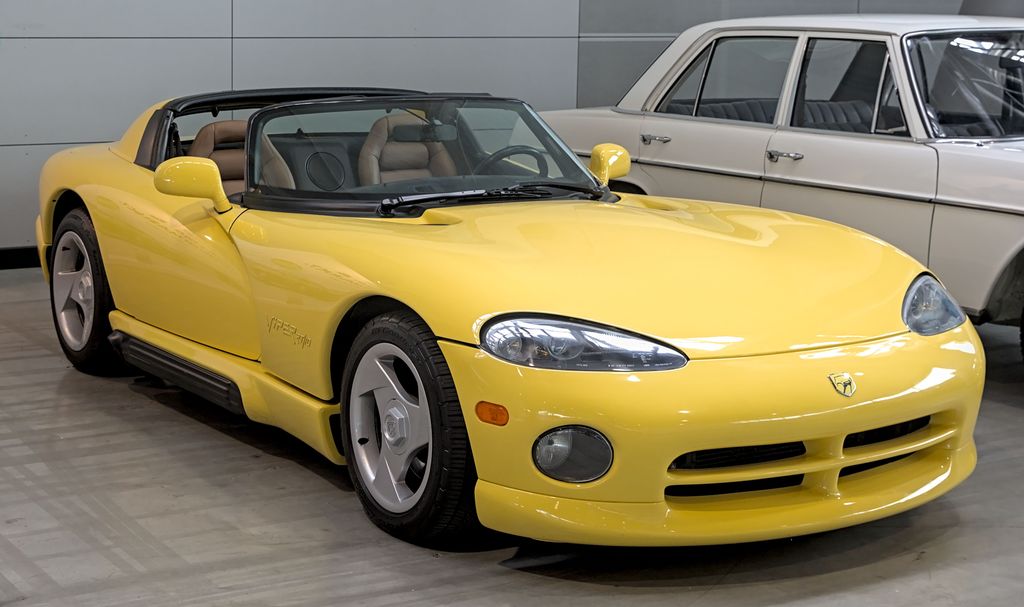
5. **Dodge Viper**
When the Dodge Viper first burst onto the scene in the early 1990s, it wasn’t just a car; it was a statement. Raw, unapologetic, and brutally powerful, it was America’s audacious answer to the precision-engineered European exotics. Produced between 1992 and 2017, the Viper was a visceral, no-frills performance machine, utterly defined by its massive, earth-shaking V10 engine. This was a car that demanded respect, a pure, undiluted dose of automotive aggression designed to thrill and, frankly, intimidate.
Driving a Viper was an experience unlike almost anything else on the road. Its aggressive styling, with wide haunches and a menacing stance, perfectly telegraphed the animalistic power beneath the long hood. The V10 engine, delivering prodigious amounts of horsepower and torque, provided brutal acceleration and a soundtrack that could raise the dead. It was a car that connected you directly to the road, with minimal electronic interference, demanding skill and commitment from its driver. For many, it represented the pinnacle of American muscle and supercar aspirations.
Sadly, even such an icon couldn’t escape the relentless march of time and regulation. As much as enthusiasts adored it, tightening safety and emission regulations became increasingly difficult hurdles for the Viper’s uncompromising design. These challenges, combined with declining sales in a competitive supercar market, ultimately led to its demise. Prices started at about $90,000 in its final iteration, a high figure but one that bought a piece of pure, unadulterated automotive history. Its departure left a canyon-sized hole in the world of high-performance driving, and many of us are still lamenting its loss.
Car Model Information: 2008 Dodge Viper SRT10
Name: Dodge Viper
Caption: 2013 SRT Viper GTS Launch Edition
Manufacturer: Dodge
Production: 1991–2006,2007–2017
Assembly: Detroit,Michigan
Class: Sports car
BodyStyle: liftback,coupe
Layout: Longitudinal engine,Front mid-engine, rear-wheel drive layout
Engine: Viper engine,{{convert,488,cuin,L,abbr=on,1,order=flip,lk=on
Abbr: on
Order: flip
Powerout: SR-I and II:,{{convert,400,hp,PS kW,0,abbr=on,lk=on
Lk: on
ModelYears: 1992-2006,2008-2017
Categories: 1990s cars, 2000s cars, 2010s cars, All accuracy disputes, All articles with unsourced statements
Summary: The Dodge Viper is a sports car that was manufactured by Dodge (by SRT for 2013 and 2014), a division of American car manufacturer Chrysler from 1992 until 2017, having taken a brief hiatus in 2007 and from 2011 to 2012. Production of the two-seat sports car began at New Mack Assembly Plant in 1991 and moved to Conner Avenue Assembly Plant in October 1995.
Although Chrysler considered ending production because of serious financial problems, on September 14, 2010, then–chief executive Sergio Marchionne announced and previewed a new model of the Viper for 2012. In 2014, the Viper was named number 10 on the “Most American Cars” list, meaning 75% or more of its parts are manufactured in the U.S. The Viper was eventually discontinued in 2017 after approximately 32,000 were produced over the 26 years of production.
The 0–60 mph (97 km/h) time on a Viper varies from around 3.5 to 4.5 seconds. Top speed ranges from 160 mph (260 km/h) to over 200 mph (320 km/h), depending on variant and year.
Get more information about: Dodge Viper
Buying a high-performing used car >>>
Brand: Dodge Model: Viper
Price: $104,995 Mileage: 8,082 mi.
Read more about: Beyond Nostalgia: 12 Enduring Reasons Why Classic Cars Still Outshine Modern Vehicles for True Enthusiasts

6. **Mazda RX-8**
For those who appreciate engineering ingenuity and a truly unique driving experience, the Mazda RX-8 holds a special place. In production from 2003 to 2012, this car was a direct continuation of Mazda’s storied tradition of rotary-engined sports cars, and it offered something genuinely different from the piston-powered mainstream. Its signature Renesis rotary engine, along with its distinctive ‘freestyle’ or suicide doors that offered easy access to the rear seats, made it a true favorite among enthusiasts who craved innovation and a distinctive character.
The Renesis rotary engine was, by all accounts, a marvel. Revving smoothly and effortlessly to high RPMs, it delivered a power band and an auditory experience unlike any conventional engine. Coupled with a lightweight design and a chassis tuned for exquisite balance, the RX-8 offered an unparalleled driving experience. It wasn’t just fast in a straight line; it was a joy to thread through corners, with precise steering and a willingness to rotate that made every back road an adventure. The unique door configuration, allowing better rear access without a B-pillar, further enhanced its quirky appeal and practicality.
However, the very thing that made the RX-8 so special ultimately contributed to its downfall. Challenges in meeting increasingly stringent emission standards proved to be a persistent headache for the Wankel rotary engine, which, despite its virtues, was notoriously thirsty and could struggle with emissions compliance. This, combined with dwindling sales in a sports car market that was increasingly shifting towards more conventional powerplants, marked its end. The RX-8 was priced around $27,000 in its last years, a bittersweet farewell to a truly innovative and beloved sports car.
Car Model Information: 2004 Mazda RX-8 Base 4dr Coupe
Name: Mazda RX-8
Manufacturer: Mazda
Production: February 2003 – June 2012
Assembly: Hiroshima
Class: Sports car
BodyStyle: Quad coupé
Related: Mazda MX-5 (NC)
Layout: Front-engine, rear-wheel-drive layout#Front mid-engine, rear-wheel-drive layout
ModelCode: List of Mazda model codes#Model codes
Designer: Ikuo Maeda,Wu-Huang Chin (interior designer)
Engine: Mazda Wankel engine#13B-MSP Renesis,Wankel engine
Powerout: convert
Transmission: Manual transmission,6-speed manual,Jatco JR405E transmission,6-speed automatic
Wheelbase: 2703 mm
Abbr: on
Length: 2003–2008: {{convert,4425,mm,in,1,abbr=on
Width: 1770 mm
Height: 1340 mm
Weight: Manual models: {{convert,1309,-,1373,kg,lb,0,abbr=on
Predecessor: Mazda RX-7
ModelYears: 2003–2012
Doors: Car door#Conventional
Categories: 2010s cars, All Wikipedia articles written in American English, All articles with failed verification, All articles with unsourced statements, Articles with failed verification from November 2019
Summary: The Mazda RX-8 is a sports car manufactured by Japanese automobile manufacturer Mazda between 2003 and 2012. It was first shown in 2001 at the North American International Auto Show. It is the direct successor to the RX-7. Like its predecessors in the RX range, it is powered by a rotary Wankel engine. The RX-8 was available for the 2003 model year in most parts of the world.
The Mazda RX-8 utilizes a rotary Wankel engine, and the non-reciprocating piston engine uses a triangular rotor inside a near oval housing, producing from 141 kW (189 hp) and 164 lb⋅ft (222 N⋅m) of torque, to 177 kW (237 hp) and 159 lb⋅ft (216 N⋅m) of torque from launch.
The RX-8 was discontinued for the 2012 model year without a successor. It was removed earlier from the European market in 2010 after the car failed to meet emissions standards. Due to falling sales from Europe coupled with rising yen prices, Mazda could not justify the continued sale of the RX-8 in other markets. 192,094 units were produced during its nine-year production run.
Get more information about: Mazda RX-8
Buying a high-performing used car >>>
Brand: Mazda Model: RX-8
Price: $9,975 Mileage: 58,171 mi.
Read more about: Gear Up for the Future: 11 Legendary Classic Cars Powering Back to Life in 2026
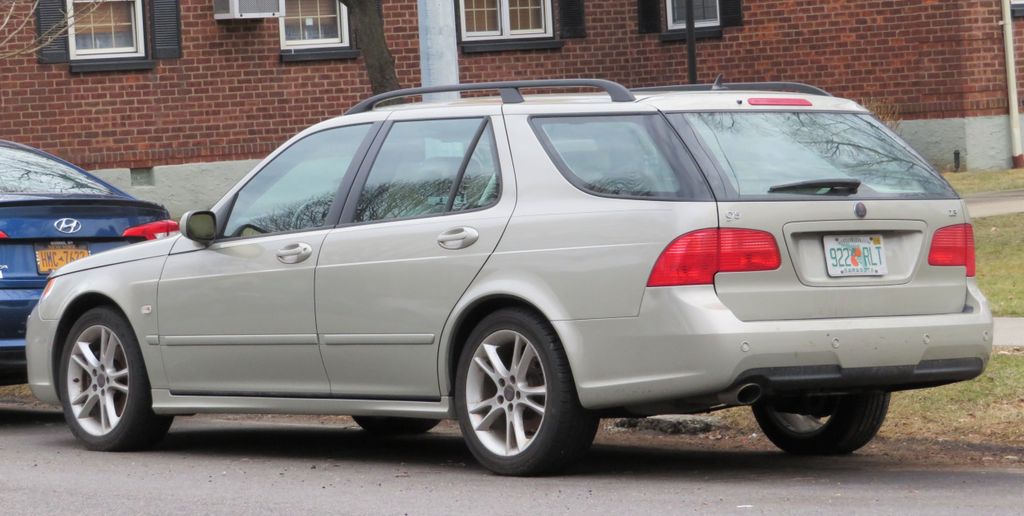
7. **Saab 9-5**
Saab, as a brand, has always marched to the beat of its own drum, and the Saab 9-5, produced between 1997 and 2012, was a prime example of this unique philosophy. It was a car that resonated with drivers who valued intelligent design, robust safety, and a certain quirky individuality over mainstream conformity. Appreciated for its distinctive, understated design and its characterful turbocharged engines, the 9-5 fostered a fiercely loyal fan base, a community of drivers who understood and celebrated the Saab difference.
What set the 9-5 apart was more than just its looks; it was a driving experience imbued with Scandinavian charm and ingenuity. The turbocharged engines delivered smooth, effortless power, making long journeys a relaxed affair, while the chassis provided a comfortable yet engaging ride. Inside, the “driver-centric cockpit” was a masterclass in ergonomic design, with unique features like the ‘Night Panel’ function and ignition key placement between the seats. It felt different, it drove different, and for many, that was its greatest strength – offering something genuinely distinctive from its German rivals.
Tragically, the story of the Saab 9-5 is inextricably linked to the broader, unfortunate narrative of Saab’s financial troubles. Despite its loyal following and the genuine quality of its engineering, the brand struggled to survive in a rapidly consolidating automotive industry. These overarching financial difficulties ultimately led to the model’s (and eventually the entire brand’s) demise, a heartbreaking end for a company that consistently dared to be different. Its final models were priced around $40,000, representing the last gasp of a truly unique automotive spirit that, to this day, is sorely missed by those who knew its value.
Car Model Information: 2011 Saab 9-5 Turbo4
Name: Saab 9-5
Caption: 2003 Saab 9-5 Griffin
Manufacturer: Saab Automobile
Production: 1997–2012
BodyStyle: ubl
Layout: ubl
Predecessor: Saab 9000
Assembly: Trollhättan
Class: Executive car
Categories: 2000s cars, 2010s cars, All articles needing additional references, All articles with dead external links, Articles needing additional references from November 2024
Summary: The Saab 9-5 is an executive car, manufactured and marketed by Saab from 1997 to 2012, across two generations.
The first generation 9-5 was introduced in 1997 for the 1998 model year, as the replacement of the Saab 9000. At the time, the car represented a significant development for the manufacturer. In the United States, the 9-5 was introduced in the spring of 1998, for the 1999 model year.
The second generation was presented at the Frankfurt Motor Show on September 15, 2009 and production began in March 2010. It was the first Saab automobile launched under Spyker Cars’ ownership, though developed almost entirely under GM’s ownership. Production ceased in 2012 amid the Saab’s liquidation.
Get more information about: Saab 9-5
Buying a high-performing used car >>>
Brand: Saab Model: 9-5
Price: Not Priced Mileage: 109,084 mi.
Read more about: Beyond the Billionaire Bling: An Insider’s Look at Warren Buffett’s 10 Unexpected Car Choices and Driving Philosophies
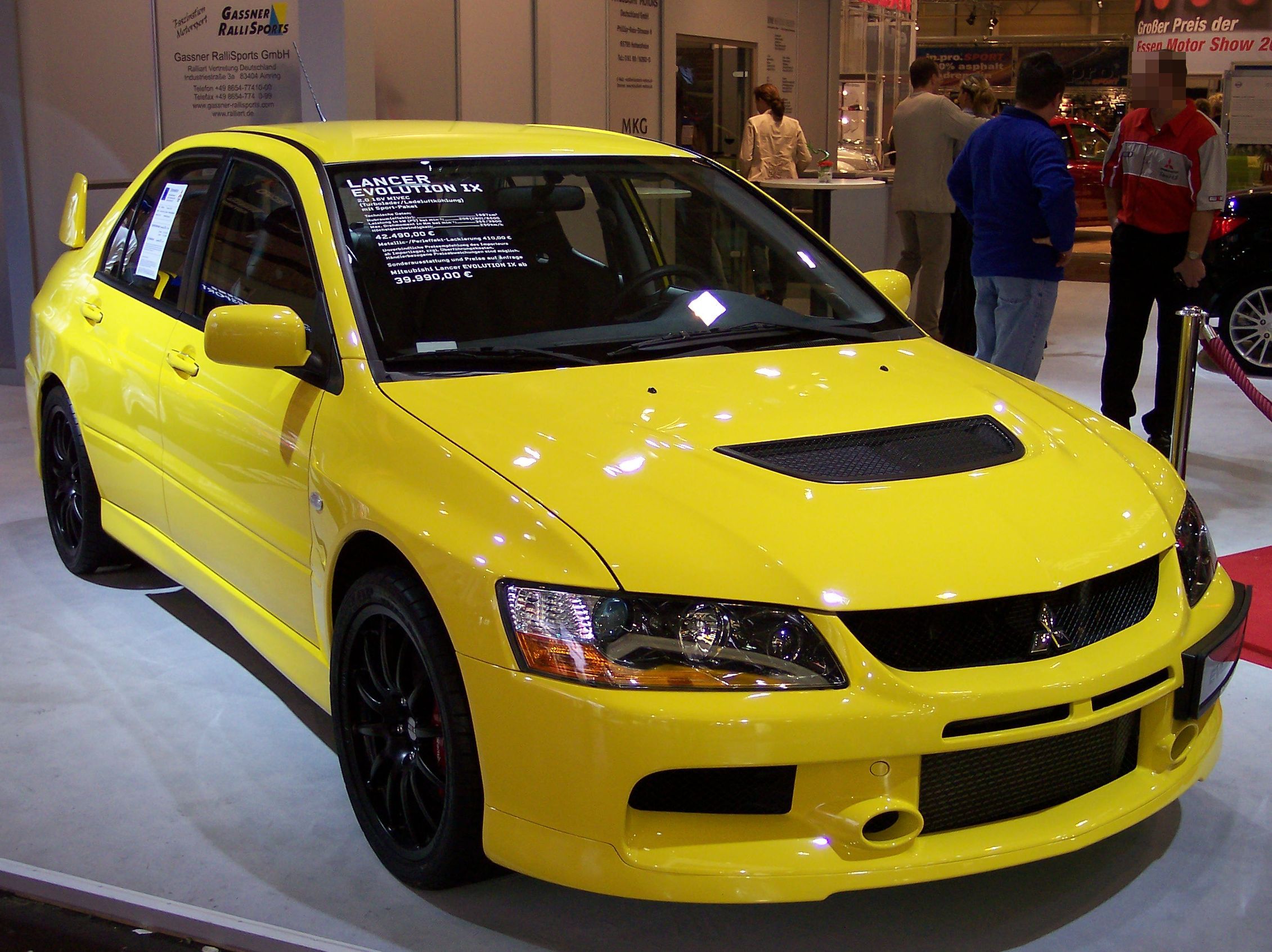
8. **Mitsubishi Lancer Evolution**
Few cars have cemented their legend status quite like the Mitsubishi Lancer Evolution, or simply, the ‘Evo.’ From its debut in 1992 through to 2016, this machine wasn’t just a car; it was a rally icon, a street fighter, and an accessible supercar slayer. What made the Evo truly special was its incredible turbocharged performance, which, when combined with its legendary all-wheel-drive system and sharp handling, delivered a driving experience that was both intoxicatingly raw and astonishingly capable. It was a direct descendant of rally stages, purpose-built to conquer everything from tarmac to gravel.
Driving an Evo was an exercise in precision and thrill. The turbocharged engine delivered an exhilarating surge of power, while the sophisticated all-wheel-drive system—especially the advanced Super All-Wheel Control (S-AWC) in later generations like the Evo X—meant phenomenal grip and agility. It carved corners with a tenacity that few cars, regardless of price, could match, turning even the most mundane road into an exciting challenge. For enthusiasts, it wasn’t just about speed; it was about the communication, the control, and the sheer confidence it inspired.
This aggressive styling and raw performance truly appealed to car enthusiasts worldwide, making it a formidable rival to its perennial competitor, the Subaru WRX STI. These cars defined a golden era of affordable, high-performance, rally-bred sedans, pushing the boundaries of what was possible in a four-door package. The Evo’s reputation was built on its uncompromising focus on driver engagement and a relentless pursuit of performance, making it a hero to a generation of gearheads.
However, even legends can fall victim to corporate strategy. Mitsubishi made the difficult decision to discontinue the Lancer Evolution as part of a broader shift in its corporate focus towards crossovers and SUVs. It was a painful moment for many, as it signaled the end of an era for rally-derived performance cars from the brand. The final models, priced around $38,000, represented the last chance to own a piece of this incredible automotive heritage, a heritage that is sorely missed in today’s increasingly SUV-dominated landscape.
Car Model Information: 2021 Lincoln Navigator Reserve
Name: Mitsubishi Lancer Evolution
Caption: Mitsubishi Lancer Evolution X
Manufacturer: Mitsubishi Motors
Production: 1992–2016
BodyStyle: sedan (car),station wagon
Assembly: Japan:,{{blist,Okazaki, Aichi,Kurashiki, Okayama
Class: Sport compact car
Layout: Front-engine, four-wheel-drive
Engine: Straight-4,Mitsubishi Sirius engine#4G63,Mitsubishi 4B1 engine#4B11T
Transmission: Twin Clutch SST,5-speed automatic (2002, 2006–2007),manual transmission,6-speed manual (2003–2008)
Predecessor: Mitsubishi Galant VR-4
Related: Mitsubishi Lancer,Mitsubishi Lancer WRC,Mitsubishi Racing Lancer
Categories: 2000s cars, 2010s cars, All-wheel-drive vehicles, All Wikipedia articles in need of updating, All Wikipedia articles that are incomprehensible
Summary: The Mitsubishi Lancer Evolution, popularly referred to as the “Evo”, is a sports sedan and rally car based on the Lancer that was manufactured by Japanese manufacturer Mitsubishi Motors from 1992 until 2016. There have been ten official versions to date, and the designation of each model is most commonly a Roman numeral. All generations use two-litre intercooled turbo inline four-cylinder engines and all-wheel drive systems.
The Lancer was originally intended only for Japanese markets, but demand on the “grey import” market led the Evolution series to be offered through Ralliart dealer networks in the United Kingdom and in various European markets from around 1998. Mitsubishi decided to export the eighth generation Evolution to the United States in 2003 after witnessing the success Subaru had in that market the previous year with the Subaru Impreza WRX.
All domestic-market versions, until the release of the Evolution IX in 2005, were limited by a gentlemen’s agreement between Japanese car manufacturers to advertise no more than 280 PS (206 kW; 276 hp). However, sources say Mitsubishi had already been producing cars with more power but had been underrating the official power outputs in order to comply with the agreement. Therefore, each subsequent version has unofficially evolved above the advertised power figures, with the Japanese-market Evolution IX reaching an alleged output of around 320 PS (235 kW; 316 hp). Various special versions available in other markets, particularly the UK, have official power outputs up to 446 PS (328 kW; 440 hp).
The tenth and final generation of the Lancer Evolution, the Evolution X, was launched in Japan in 2007, and overseas markets in 2008. The Evolution X was produced for almost 10 years until Mitsubishi retired the Lancer Evolution in April 2016.
Get more information about: Mitsubishi Lancer Evolution
Buying a high-performing used car >>>
Brand: Mitsubishi Model: Lancer Evolution
Price: $37,054 Mileage: 78,317 mi.
Read more about: Beyond the Bulk: 10 Cars That Redefine Pedestrian Safety – Why Compacts Are Outperforming Larger Models
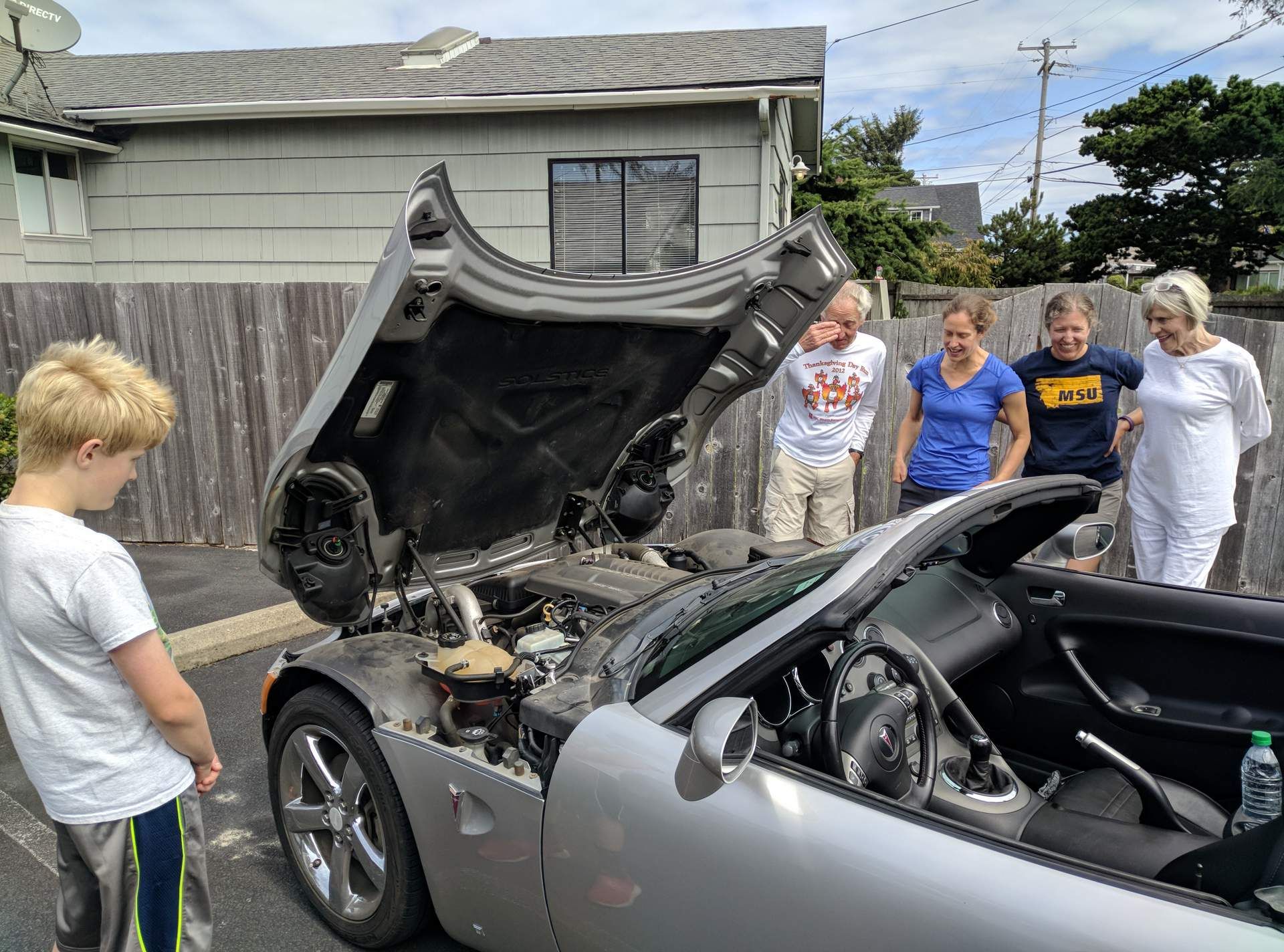
9. **Pontiac Solstice**
In a world where many cars began to blend into a homogenous blob of practicality, the Pontiac Solstice arrived like a breath of fresh air. Produced between 2005 and 2009, this sporty roadster was a bold statement from Pontiac, showcasing striking looks and a clear intention to inject excitement back into the brand. It was designed to evoke emotions, to be driven for the sheer joy of it, rather than just getting from point A to point B. Its sculpted lines and aggressive stance gave it an undeniable presence on the road.
The Solstice offered a truly engaging driving experience, a direct connection to the asphalt that felt increasingly rare. It was a fun and affordable convertible, perfect for carving through winding roads with the top down, letting the wind in your hair. For many, it represented a return to the roots of the classic American roadster, prioritizing lightweight agility and driver enjoyment over outright horsepower figures. It was a car that didn’t take itself too seriously, yet delivered genuine thrills.
Even with its undeniable charm and attractive proposition, the Solstice ultimately became a casualty of larger forces. Its discontinuation was intrinsically linked to the decline of the entire Pontiac brand and the devastating impact of the 2008 global financial crisis. As General Motors underwent a massive restructuring, beloved models like the Solstice, despite their inherent appeal, were deemed expendable in the fight for corporate survival.
It’s a poignant reminder that sometimes, even the most appealing and well-conceived cars can be taken from us by circumstances beyond their control. With prices starting at about $25,000 in its final years, the Solstice represented fantastic value for a pure, unadulterated sports car experience. Today, it remains a cherished example of what Pontiac was capable of, a stylish and engaging roadster that left us far too soon.
Car Model Information: 2009 Pontiac Solstice GXP
Name: Pontiac Solstice
Manufacturer: General Motors
Production: 2005–2010,65,724 produced
ModelYears: 2006–2010
Assembly: Wilmington, Delaware
Class: Sports car
Layout: Front-engine, rear-wheel-drive layout#Front mid-engine, rear-wheel-drive layout
Platform: GM Kappa platform
Predecessor: Pontiac Fiero
BodyStyle: Roadster (automobile),targa top
Wheelbase: 95.1 in
Abbr: on
Length: 161.1 in
Width: 71.4 in
Height: 50.2 in
Weight: 2860 lb
Engine: GM Ecotec engine#LE5,GM Ecotec engine#2.0 LNF (Z20NHH Opel)
Transmission: Aisin Seiki,GM 5L40 transmission
Related: Saturn Sky,Opel GT#GT (roadster) (2007–2010),Daewoo G2X
Designer: Franz von Holzhausen,Vicki Vlachakis,Wayne Cherry
Categories: All articles needing additional references, All articles with unsourced statements, Articles needing additional references from March 2025, Articles with short description, Articles with unsourced statements from March 2025
Summary: The Pontiac Solstice is a convertible sports car that was produced by Pontiac from 2005 to 2010. Introduced at the 2004 North American International Auto Show, the Solstice roadster began production in Wilmington, Delaware, starting in mid-2005 for the 2006 model year. It is powered by a naturally aspirated 2.4 L I4 engine, producing 177 hp (132 kW) and 166 lb⋅ft (225 N⋅m) of torque.
The exterior styling of the production Solstice is similar to that of the 2002 Solstice concept that preceded it. Production of the Solstice was to be running before summer 2005, but delays at the Wilmington plant pushed volume production to the fourth quarter. The new hardtop targa top 2009 model was announced in mid-2008. The Solstice uses the GM Kappa platform, which also underpins the Saturn Sky, Opel GT, and Daewoo G2X. It was the brand’s first two-seater since the Pontiac Fiero was discontinued in 1988.
The Solstice was nominated for the North American Car of the Year award and Design of the Year award from the Automobile Journalists Association of Canada (AJAC) for 2006. It was a runaway hit for Pontiac, with 7,000 orders in the first 10 days of availability and 6,000 more orders before winter. Although first-year production was planned at 7,000, GM apologized to customers for delays and increased production, delivering 10,000 by March 1.
Following the 2008 economic recession, GM discontinued the Pontiac division. Production ended with the closure of the Wilmington Assembly plant in July 2009.
Get more information about: Pontiac Solstice
Buying a high-performing used car >>>
Brand: Pontiac Model: Solstice
Price: $16,900 Mileage: 33,919 mi.
Read more about: Beyond the Neon Glow: Revisiting 14 Unforgettable ’80s Sports Cars That Defined a Decade of Driving Passion
10. **Subaru WRX STI Hatchback**
For a brief, glorious period from 2008 to 2014, Subaru offered a variant of its rally-bred icon that perfectly blended blistering performance with everyday practicality: the WRX STI Hatchback. This wasn’t just a car; it was a Swiss Army knife on wheels, capable of delivering supercar-baiting acceleration and tenacious grip on a track, yet equally at home swallowing groceries or snowboarding gear. It captured the hearts of enthusiasts who demanded performance without sacrificing an ounce of real-world usability.
What truly set the STI Hatchback apart was its incredible versatility. Under the hood was the potent turbocharged Boxer engine, coupled with Subaru’s symmetrical all-wheel-drive system, delivering an almost telepathic connection to the road. This meant savage acceleration and phenomenal cornering capabilities, making every drive an event. But the hatchback body style transformed it from a mere performance sedan into a genuinely practical hot hatch, opening up its appeal to a wider audience who needed that extra bit of cargo space.
It represented the best of both worlds: uncompromised performance for the weekend warrior, and ample space for daily duties or adventurous road trips. This unique combination made it an absolute favorite, creating a loyal following of drivers who appreciated its dual nature and rugged good looks. It was a vehicle that truly blurred the lines between a family car and a track machine, proving that you could indeed have your cake and eat it too.
Sadly, despite its passionate fan base and undeniable strengths, Subaru made the strategic decision to focus its WRX STI efforts exclusively on the sedan version. This meant the hatchback, with all its practical advantages and aggressive styling, was axed from the lineup. Priced around $35,000 in its final year, it was a hard pill for many to swallow, marking the end of an era for the ultimate performance wagon. Today, the WRX STI Hatchback remains a highly sought-after modern classic, a testament to its enduring appeal and regrettable disappearance.
Car Model Information: 2021 Lincoln Navigator Reserve
Name: Subaru Impreza WRX STI
Caption: 2011 Subaru Impreza WRX STI Sedan (3rd generation)
Manufacturer: Subaru
Production: 1994–2014
Assembly: Ōta, Gunma
Predecessor: Subaru Legacy (first generation)
Successor: Subaru WRX STI
Class: Sport compact,World Rally Car
BodyStyle: Compact Sedan, Coupe, Wagon, Hatchback
Layout: Front-engine design
Engine: Subaru EJ engine
Categories: All-wheel-drive vehicles, All articles needing additional references, All articles with unsourced statements, Articles needing additional references from July 2025, Articles with short description
Summary: The Subaru Impreza WRX STI is a high performance model of the Subaru Impreza compact car line, manufactured by Japanese automaker Fuji Heavy Industries Subaru.
In 1988, FHI created Subaru Tecnica International (STi) as its motorsport division to develop and compete in the FIA World Rally Championship and other motorsports activities. Following the introduction of the first generation Impreza in November 1992 and the following year’s debut of the Group A rally car into the WRC, an ‘STi version’ was made commercially available in January 1994 as a homologation model under FIA regulations. Thereafter, subsequent evolutions dubbed STi Version or simply STI were manufactured and sold alongside the Impreza model lineup initially in Japan only and later in selected world markets. As the STi or STI model was typically the highest spec of the Impreza, it has become popular with performance enthusiasts, tuners and amateur racers in many motorsports disciplines especially rallying and circuit driving.
FHI has released many different models and versions including special limited editions of the WRX STI. However many of these versions were and are only available in the Japanese Domestic Market. Although the concept behind the STI model is taking a base model such as the Impreza or Legacy and further developing it for high performance, STI models fall mainly into 2 categories. The first is a fully developed and tested model with the purpose of homologating it for motorsports which is sold as a street legal road car. The second is a complete car pre-fitted from the factory with parts that are available from the STI catalogue and marketed as a ‘Tuned by STI’ model. Spin-off models with mainly cosmetic additions or alterations are also marketed usually in limited quantities.
Get more information about: Subaru Impreza WRX STI
Buying a high-performing used car >>>
Brand: Subaru Model: WRX STI
Price: $37,054 Mileage: 78,317 mi.
Read more about: Beyond the Bulk: 10 Cars That Redefine Pedestrian Safety – Why Compacts Are Outperforming Larger Models
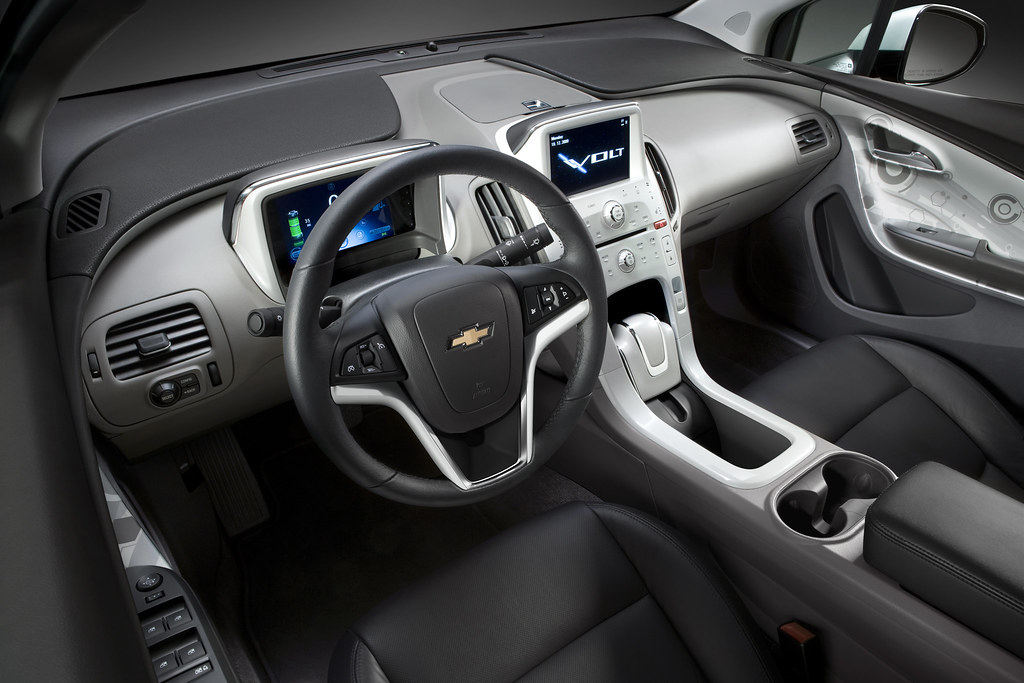
11. **Chevrolet Volt**
The Chevrolet Volt, produced between 2010 and 2019, was a true trailblazer, a pioneer in the then-nascent world of plug-in hybrid technology. It wasn’t just another car; it was a bold statement about the future of propulsion, offering a groundbreaking solution to the challenge of balancing electric driving with the peace of mind of a gasoline range extender. This innovative technology was nothing short of revolutionary, providing drivers with the benefits of electric mobility without the dreaded range anxiety.
The Volt’s genius lay in its unique powertrain, which allowed it to operate primarily on electric power for daily commutes, often without needing to engage the gasoline engine at all. But for longer journeys, the efficient internal combustion engine would kick in, acting as a generator to extend the range for hundreds of miles. This brilliant engineering made it incredibly versatile and practical, carving out a niche for itself as an ideal solution for drivers looking to dip their toes into electric vehicles without committing fully.
It offered a genuine pathway to reducing emissions and fuel consumption for countless drivers, proving that alternative powertrains could be both efficient and user-friendly. The Volt quickly gained a reputation for its smooth, quiet operation and intelligent energy management, making it a compelling choice for environmentally conscious consumers and early adopters of advanced automotive technology.
Despite its innovative tech and critical acclaim, the Volt’s journey was ultimately cut short by the rapid evolution of the automotive landscape. The burgeoning market for pure electric vehicles (EVs) began to overshadow plug-in hybrids, as consumers increasingly gravitated towards fully electric options with longer ranges and faster charging. This shift, combined with Chevrolet’s strategic repositioning, led to its discontinuation. The final models were priced around $34,000, marking the end of a truly pioneering vehicle that helped pave the way for today’s EV revolution.
Car Model Information: 2018 Chevrolet Volt LT
Name: Chevrolet Volt
Caption: 2012 Chevrolet Volt
Manufacturer: General Motors
Production: November 2010 – February 2019
ModelYears: 2011–2019
Class: Compact car
BodyStyle: liftback
Layout: Front-engine, front-wheel drive
Designer: Jelani Aliyu
Categories: All Wikipedia articles written in American English, All articles containing potentially dated statements, All articles with dead external links, Articles containing potentially dated statements from August 2016, Articles containing potentially dated statements from February 2014
Summary: The Chevrolet Volt is an electric vehicle car that was manufactured by General Motors, and also marketed in rebadged variants as the Holden Volt in Australia and New Zealand and the Buick Velite 5 in China, and with a different fascia as the Vauxhall Ampera in the United Kingdom and as the Opel Ampera in the remainder of Europe. Volt production ended in February 2019. While similar in some ways to hybrid vehicles, the Chevy Volt is an electric car with an onboard gasoline generator.
Sales of the Volt began in the United States in mid-December 2010, followed by some European countries and other international markets in 2011. Global combined Volt/Ampera-family sales totaled about 177,000 units by the end of October 2018. The U.S. was the leading market, with 157,054 Volts delivered through the end of 2019, followed by Canada with 16,653 Volts sold through September 2018. Just over 10,000 Opel/Vauxhall Ampera cars had been sold in Europe as of June 2016. Until December 2018, the Volt/Ampera family of vehicles was the world’s bestselling plug-in hybrid vehicle. When it was discontinued, the Chevrolet Volt was still listed as the top-selling plug-in hybrid in the American market.
The Volt operates as a pure battery electric vehicle until its battery capacity drops to a predetermined threshold from full charge. From there, its internal combustion engine powers an electric generator to extend the vehicle’s range as needed. While running on gasoline at high speeds the engine may be mechanically linked (by a clutch) to the car’s gearbox, improving efficiency by 10% to 15%. The Volt’s regenerative braking also contributes to the on-board electricity generation. Under the United States Environmental Protection Agency (EPA) cycle, the 2013–15 model year Volt all-electric range is 38 mi (61 km), with a combined electric mode/gasoline-only rating of 62 mpg‑US (3.8 L/100 km; 74 mpg‑imp) equivalent (MPG equivalent).
The second-generation Volt’s improved battery system and drivetrain increased the all-electric range to 53 miles (85 km), its EPA-rated fuel economy in charge-sustaining mode to 42 mpg‑US (5.6 L/100 km; 50 mpg‑imp), and the combined city/highway fuel economy in all-electric mode to 106 MPG-e, up from 98 MPG-e. Deliveries to retail customers in the U.S. and Canada began in October 2015 as a 2016 model year.
The Volt won several awards, including the 2009 Green Car Vision Award, 2011 Green Car of the Year, 2011 North American Car of the Year, 2011 World Green Car, 2011 SAE Best engineered car, 2012 European Car of the Year, and 2016 Green Car of the Year.
Get more information about: Chevrolet Volt
Buying a high-performing used car >>>
Brand: Chevrolet Model: Volt
Price: $13,961 Mileage: 80,907 mi.
Read more about: Decoding Hybrid Reliability: The 11 Models You Should Approach with Caution Due to Premature Electrical and Battery Failures

12. **Alfa Romeo 4C**
The Alfa Romeo 4C, available from 2013 to 2020, was an unadulterated celebration of pure driving. This wasn’t a car built for practicality, nor for luxurious commutes; it was a lightweight sports car designed to thrill, to engage, and to connect the driver directly to the road. Its heart was a carbon fiber chassis, a technology usually reserved for exotic supercars, giving it incredible rigidity and an almost impossibly low curb weight that set it apart from virtually every other car in its class.
Driving the 4C was an experience that bordered on the visceral. With its mid-mounted engine and unassisted steering, every nuance of the road was communicated directly to the driver’s fingertips. It was responsive, agile, and utterly exhilarating, a machine that demanded attention and rewarded skill. This pure, unfiltered driving experience won a devoted legion of fans who yearned for a return to simpler, more analog sports cars in an increasingly digital world. It was a magnificent ode to Alfa Romeo’s sporting heritage.
The 4C’s minimalist approach, focused entirely on performance and driver involvement, meant that luxuries were few and far between. It was loud, it was raw, and it was glorious because of it. It perfectly embodied the passionate spirit of Italian automotive engineering, delivering incredible performance and handling in a compact, stunningly beautiful package. It proved that you didn’t need a massive engine or a six-figure price tag to deliver an unforgettable sports car experience.
However, the very purity that made the 4C so beloved also contributed to its limited sales. Its uncompromising nature and niche appeal, combined with Alfa Romeo’s strategic decision to focus on more mainstream, higher-volume models, ultimately sealed its fate. As the brand aimed for broader market success, the specialized 4C was deemed too niche to continue. Priced around $55,000 towards the end of its run, it remains a rare and highly prized machine, a tangible reminder of when Alfa Romeo dared to be truly different.
Car Model Information: 2021 Lincoln Navigator Reserve
Name: Alfa Romeo 4C,Alfa Romeo 4C Spider
Manufacturer: FCA Italy
Production: [object Object]
Assembly: Modena
Class: Sports car
Layout: Rear mid-engine, rear-wheel-drive layout
BodyStyle: coupé
Engine: Fiat Pratola Serra modular engines,Turbocharger,Straight-four engine
Transmission: Dual clutch transmission,FPT C635 DDCT transmission
Wheelbase: 2380 mm
Abbr: on Coupé
Length: 3989 mm
Width: 2090 mm
Height: 1183 mm
Weight: 940 kg
Related: Abarth Classiche 1000 SP
Designer: Marco Tencone
ModelYears: 2014–2020
Categories: Alfa Romeo concept vehicles, Alfa Romeo vehicles, All articles with unsourced statements, Articles with short description, Articles with unsourced statements from April 2022
Summary: The Alfa Romeo 4C (Type 960) is a mid-engined sports car that was produced by Italian car manufacturer Alfa Romeo. Unveiled at the 2013 Geneva Motor Show, the 4C was initially only available as a coupé, with a spider body style coming a few years later in 2015. The name 4C refers to its straight-four engine.
Get more information about: Alfa Romeo 4C
Buying a high-performing used car >>>
Brand: Alfa Romeo Model: 4C
Price: $37,054 Mileage: 78,317 mi.
Read more about: Decoding the Digital Underworld: 14 Essential Gadgets for Cyber Security Professionals

13. **Hummer H1**
Before SUVs became commonplace and electrification began its march, there was the Hummer H1, an automotive colossus unlike anything else on civilian roads. Produced between 1992 and 2006, this wasn’t just a vehicle; it was a civilianized version of the military’s legendary Humvee, bringing unparalleled rugged capability and an utterly imposing presence to the everyday driver. It was a vehicle designed to conquer, to go where no other car dared, and to make an unmistakable statement.
The H1’s sheer scale and uncompromising design meant it was built for extreme conditions. Its wide stance, massive ground clearance, and advanced four-wheel-drive system allowed it to traverse virtually any terrain imaginable, from deep mud to rocky trails. It was a vehicle of epic proportions, both in size and capability, making it an icon for those who sought the ultimate in off-road prowess and an undeniable symbol of power and adventure. Nothing else on the road could command attention quite like an H1.
More than just its off-road credentials, the Hummer H1 cultivated a unique persona. It wasn’t subtle; it was a machine that embraced its military roots with an almost brutalist aesthetic. For a certain segment of buyers, it represented the pinnacle of automotive extravagance and a distinct rejection of conventional norms. Its raw, unrefined character was precisely its appeal, offering an experience that was far removed from the softer, more domesticated SUVs that would eventually flood the market.
Yet, even an icon like the H1 couldn’t escape the changing tides of public sentiment and economic realities. Its incredibly inefficient fuel consumption, a significant concern as environmental awareness grew, proved to be an increasingly difficult hurdle. This, coupled with the immense financial challenges faced by General Motors in the late 2000s, ultimately led to its discontinuation. With last models carrying a price tag of over $130,000, the Hummer H1 left behind a legacy as a truly unforgettable, albeit polarizing, piece of automotive history.
Car Model Information: 2002 Hummer H1 Enclosed
Name: Hummer H1
Manufacturer: AM General
Aka: Hummer HMC (1992–2002),HMMWV (HUMVee)
Production: 1992–2006 (11,818 produced)
ModelYears: 1992–2004 , 2006
Assembly: Mishawaka, Indiana
Class: Full-size,pickup truck
BodyStyle: 4-door Open Top – HMCO , 4-door SUV – HMCS , 4-door Hard Top – HMC4 , 2-door Fleet – KSC2 , 2-door Pickup – XLC2
Related: Humvee
Layout: Front-engine, four-wheel-drive layout,four-wheel drive
Engine: Chevrolet_small-block_engine_(first-_and_second-generation)#L05,V8 engine
Transmission: Automatic transmission,GM 4L80-E transmission
Wheelbase: 130 in
Abbr: on
Length: 184.5 in
Width: 86.5 in
Height: 77 in
Caption: Hummer HMC Soft Top
Categories: 2000s cars, AM General vehicles, All-wheel-drive vehicles, Articles with short description, Cars introduced in 1992
Summary: The Hummer H1 is a full-size four-wheel-drive utility vehicle based on the M998 Humvee, which was developed by AM General when it was a subsidiary of American Motors Corporation (AMC). Originally designed strictly for military use, the off-road vehicle was released to the civilian market.
The civilian version was produced from 1992 through 2006 and was the first of what became the Hummer line. AM General built both the H1 and the Humvee in its Mishawaka, Indiana, facility. GM stopped marketing the H1 in the 2006 model year, but AM General continued production of the military Humvee versions through 2018.
Get more information about: Hummer H1
Buying a high-performing used car >>>
Brand: Hummer Model: H1
Price: $138,800 Mileage: 14,702 mi.
Read more about: Are You Driving a ‘Jerk’ Car? 18 Vehicles With Bad Driver Reputations

14. **BMW Z8**
From 1999 to 2003, BMW offered something truly special, a car that was less about pushing future boundaries and more about celebrating a glorious past: the BMW Z8. This exquisite roadster wasn’t merely a new model; it was a meticulously crafted tribute to the legendary 1950s BMW 507, blending timeless classic styling with modern engineering prowess. It was an instant classic, designed to be admired, driven, and cherished.
The Z8’s aesthetic was utterly captivating, a masterpiece of automotive design that seamlessly married retro elegance with contemporary aggression. Beneath its stunning lines lay a powerful V8 engine and an advanced all-aluminum chassis, ensuring that its performance was as impressive as its looks. It delivered a sophisticated yet exhilarating driving experience, capable of both effortless cruising and spirited performance, truly embodying the spirit of a grand touring roadster.
This was not a mass-production vehicle. The Z8 was produced in strictly limited numbers, cementing its status as a rare and exclusive machine from the moment it rolled off the assembly line. Its scarcity, combined with its breathtaking design and performance, quickly elevated it to the coveted status of a modern classic, sought after by collectors and enthusiasts who appreciate its blend of art and engineering.
Despite its undeniable allure and a brief but impactful production run, the Z8’s high price tag, close to $130,000 at launch, and its inherently niche market appeal ultimately dictated its short lifespan. It was always intended to be a special, limited-edition halo car rather than a volume seller. Its departure from production left a gap for those who appreciate bespoke automotive artistry, but ensured its enduring legacy as one of BMW’s most beautiful and collectible creations.
Car Model Information: 2001 BMW Z8 Base
Name: BMW Z8 (E52)
Production: 1998–2003,5,703 produced
Assembly: Munich
Class: Sports car
BodyStyle: Roadster (automobile)
Layout: rear-wheel drive
Engine: BMW S62
Transmission: manual transmission
Wheelbase: 98.6 in
Abbr: cite web
Length: 173.2 in
Width: 72 in
Height: 51.9 in
Weight: 3494 lb
ModelYears: 1999–2003
Designer: Henrik Fisker
Categories: All articles with dead external links, Articles with dead external links from September 2023, Articles with permanently dead external links, Articles with short description, BMW vehicles
Summary: The BMW Z8 is a roadster produced by German automotive manufacturer BMW from 1998 to 2003. The Z8 was developed under the codename “E52” between 1993 and 1999, through the efforts of a design team led by Chris Bangle from 1993 to 1995. The exterior was designed by Henrik Fisker and the interior by Scott Lempert.
The Z8 originally was designed as a styling exercise intended to evoke and celebrate the 1956–1959 BMW 507. Prototypes were spotted testing between 1996 and 1999. A concept was later developed to preview the Z8, called the Z07 and was showcased in October 1997 at the Tokyo Motor Show.
Get more information about: BMW Z8
Buying a high-performing used car >>>
Brand: BMW Model: Z8
Price: $179,900 Mileage: 6,716 mi.
Read more about: Engine of Regret: 14 Car Models That Left Owners Begging for a Trade-In – A Data-Driven Warning
As we pull the handbrake on our journey through these departed automotive heroes, it’s clear that their stories are far more than just tales of cars leaving production lines. Each vehicle, from the rally-bred legend to the luxury roadster, carried a piece of automotive soul, pushing boundaries, inspiring passions, and creating memories that linger long after the final model rolled off the factory floor. They remind us that the motoring world, in its constant evolution, sometimes bids farewell to true brilliance, leaving us to cherish the legacies of these magnificent machines and wonder what might have been. But one thing is for sure: their spirit lives on, roaring in the hearts of enthusiasts and echoing in the annals of automotive history.



